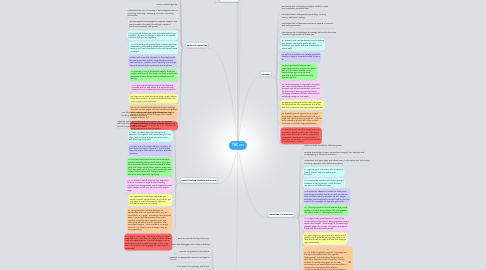TWC 301
por Alex Knab


1. Rhetorical Knowledge
1.1. Identify, articulate, and focus on a defined purpose
1.2. Respond to the need of the appropriate audience
1.3. Respond appropriately to different rhetorical situations
1.4. Use conventions of format and structure appropriate to the rhetorical situation
1.5. Adopt appropriate voice, tone, and level of formality
1.6. Understand how each genre helps to shape writing and how readers respond to it
1.7. Write in multiple genres
1.8. Understand the role of a variety of technologies/media in accessing, retrieving, managing, and communicating information
1.9. Use appropriate technologies to organize, present, and communicate information to address a range of audiences, purposes, and genres
1.10. C1 Try and get to know as much as possible about your audience. You want to design to appeal to the specific audience that you are targeting.
1.11. C1 When writing ask yourself, why a reader would be interested in your writing, whats special about your writing, and how those special parts will benefit those reading it.
1.12. C2 the most important elements on the page should be most prominent and the secondary the second most and so on. Create a visual hierarchy and arrange elements according to importance and emphasis
1.13. C3 Contrast is one of the easiest ways to draw your reader’s attention to your page. Contrast is used with emphasis to keep things looking different and not boring.
1.14. C4 A symmetrical balanced layout has elements mirrored and are safe where as a asymmetrically balanced has it unequal elements and are dynamic.
1.15. C5 alignment is visual elements lining up with others, these have invisible connections between them that make a page more organized.
1.16. C6 You can repeat visual elements to form unifying structure on your pages, this ties everything together. This makes pages more unified/cohesive. You can repeat all kinds of different things, lines, shapes, images, textures, ect
1.17. C7 good verbal flow is very important, establishing a master plan is a good way to set it up. This will leave your page more unified/consistent
2. Critical Thinking, Reading, and Writing
2.1. Use information, writing, and reading for inquiry, learning, thinking, and communicating
2.2. Integrate previously held beliefs, assumptions, and knowledge with new information and the ideas of others to accomplish a specific purpose within a context
2.3. C1 Look at others work and use that as an example, but organize and create from your own ideas. This can help to show you what works and what might not work.
2.4. C2 try to look at the weaknesses in emphasis of your work and how to improve it. The only way learn the proper techniques is practice, practice, practice!!
2.5. C3 Contrast occurs when two or more elements look dramatically different from one another and there are many different ways to achieve it. Place small with large, capital letters next to lower case, thick type lines next to thin, warm colors with cool colors, vertical colors with strong horizontal elements, black type with light grey.
2.6. C4 It is a better Idea to only use one alignment scheme at a time on page to avoid looking confused and disorganized. Don’t forget black and white images can be livened up in many simple ways.
2.7. C5 Pages seem more organized when you visually connect elements with one another, you may have to rework the balance after you change the alignment of a page.
2.8. C6 Using repetition requires designer to deliberately seek out visual elements and use consistently on a page. Repeating visual element doesn’t mean that the elements have to be identical.Using the same typeface, size, and color fonts are also a form of repetition, also consistent margins. When someone is using a element 2 or more times in a design, they are using repetition.
2.9. C7 There is verbal flow – the order in which viewers read text, and Visual flow- the order in which viewers look at images/graphics. The best designs draw on both types. not all readers read right to left, keep this in mind when making pages for international audiences.
3. My Goals
3.1. Become more technologically savvy
3.2. Learn about blogging and online publishing
3.3. Improve my grammer/conventions
3.3.1. New node
